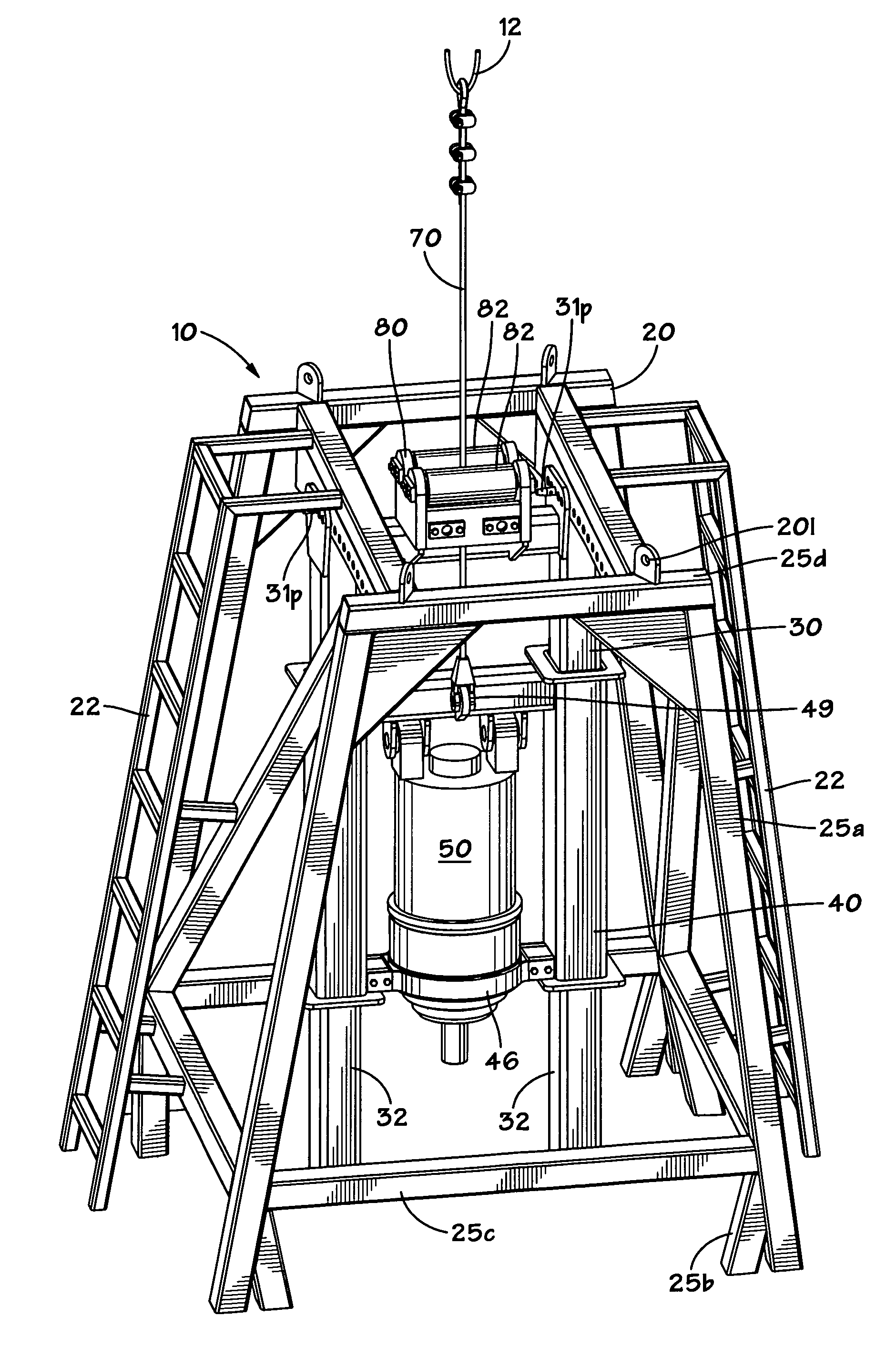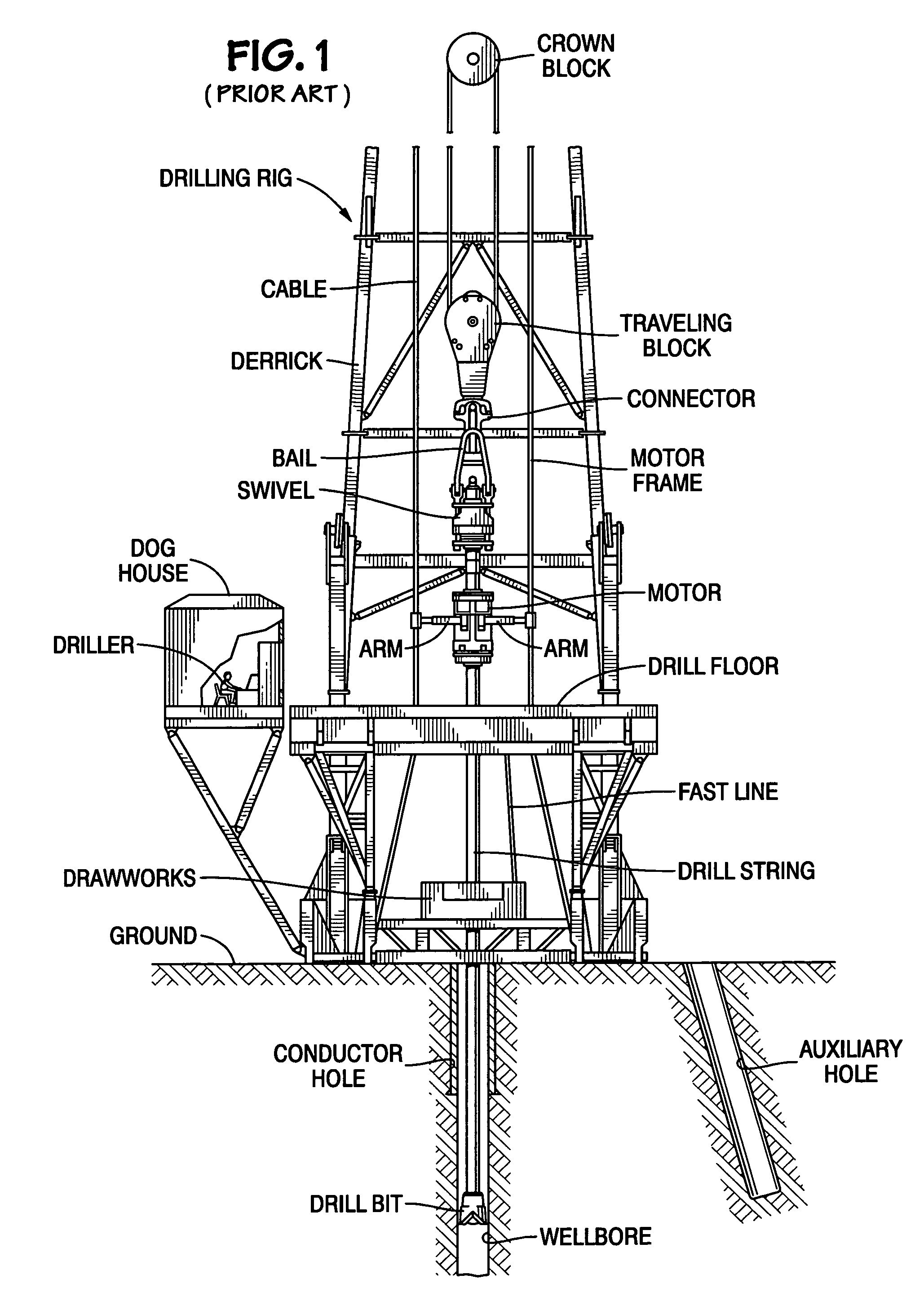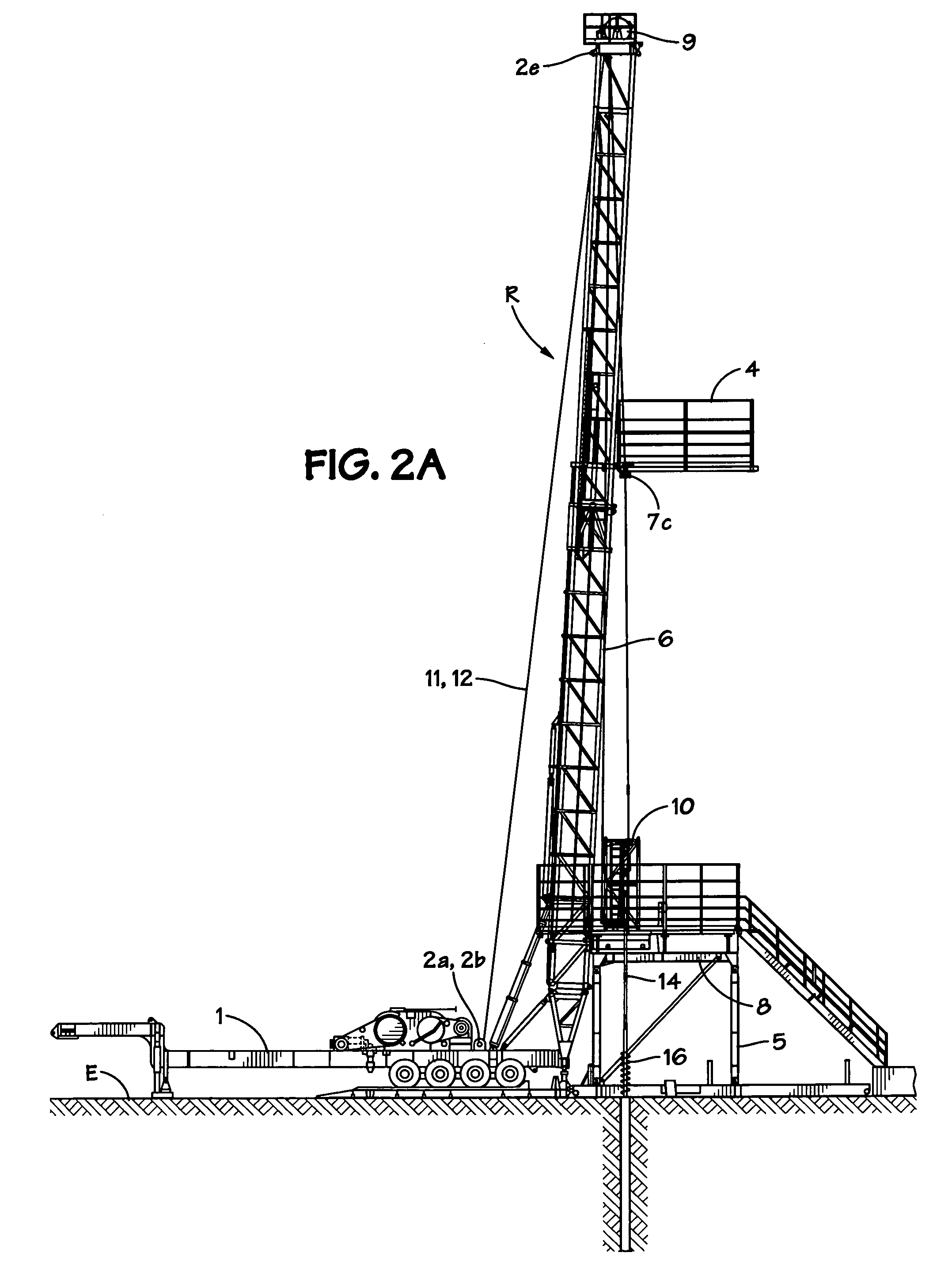Methods and systems for drilling auxiliary holes
a technology of auxiliary holes and methods, applied in the direction of drilling pipes, drilling with mechanical conveying, rotary drilling, etc., can solve the problems of inaccurate drilling angles, difficult to maintain a precise drilling angle, and danger to employees and personnel, and achieve the effect of saving tim
- Summary
- Abstract
- Description
- Claims
- Application Information
AI Technical Summary
Benefits of technology
Problems solved by technology
Method used
Image
Examples
Embodiment Construction
[0075]FIG. 1 illustrates a prior art drilling rig which, as shown, has a top drive system for rotating a drill string; but as is well-known, any suitable rotary apparatus on a drill floor may be used for this purpose. The prior system as shown in FIG. 1 has a drilling rig with a rig floor, a derrick, a crown block, and strands of a cable, by which a traveling block is vertically positioned. A lower end of the traveling block is connected to an upper end of a swivel. The swivel is supported by bails from a connector. A drilling motor has a hollow output shaft that directly drives a drill string with a drill bit used for drilling a main wellbore. The motor has opposed arms attached to a motor frame. The traveling block moves vertically within the derrick and the swivel, motor, and drill string are carried therewith. A drawworks drive is positioned to accept the marginal end of a cable about a drawworks drum. A dog house houses control panels and electronic circuitry for controlling th...
PUM
 Login to View More
Login to View More Abstract
Description
Claims
Application Information
 Login to View More
Login to View More - R&D
- Intellectual Property
- Life Sciences
- Materials
- Tech Scout
- Unparalleled Data Quality
- Higher Quality Content
- 60% Fewer Hallucinations
Browse by: Latest US Patents, China's latest patents, Technical Efficacy Thesaurus, Application Domain, Technology Topic, Popular Technical Reports.
© 2025 PatSnap. All rights reserved.Legal|Privacy policy|Modern Slavery Act Transparency Statement|Sitemap|About US| Contact US: help@patsnap.com



